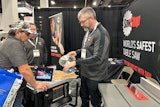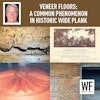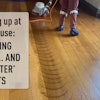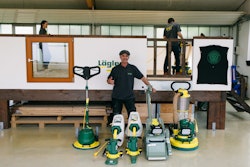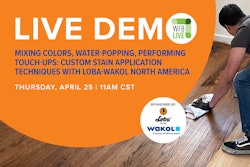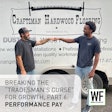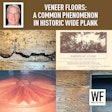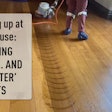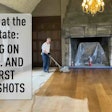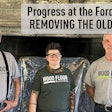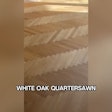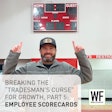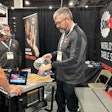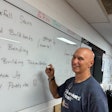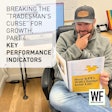

The look my fellow regional instructor Jon Namba had in his eyes confirmed what I’d heard. I’m sure I looked just as taken aback to Jon as he did to me. And it all came from what seemed to me an innocent question.
We were in Mexico City, preparing to set up the classroom and training area for about 80 installers and other flooring people about to attend a three-day Bostik-sponsored NWFA Basic Installation School, specifically tailored to Mexico’s wood floor market. While Jon and I were happily conversing over morning coffee and breakfast with Daniel Sanchez, national sales manager of Bostik Mexicana S.A., all I did was ask, “So, how many do you have coming?”
Daniel did change a little in his cheery demeanor to slightly timid when, like a poker player waiting to test his opponents’ reactions, he quietly said, “We have 196 registered.”

“No kidding!” I said, and there the adventure started. Between setting up the classroom with over 200 bags stuffed with Bostik goodies and personal protective equipment, assembling 16 work stations on plastic-protected carpet, moving product from one area to another, and rearranging the Powerpoint presentation to fit the adjusted outline, on that setup day we made a monstrous 16-hour effort. Thanks to the work and support by our local Bostik support team: Daniel Sanchez, Orlando Saucedo, Omar Ramos, Eduardo Garcia, along with Eric Kurtz, U.S. products/marketing manager.
The next morning we were joined by Bostik’s Mike Johns, territory sales manager; Santiago Hernandez and Tim Martinho from the U.S. The morning classroom was nothing less than impressive: 181 eager attendees. Classroom sessions were handled by alternating commentary on the slide presentations between Jon and me, while Daniel provided the translations. In moments, we got the rhythm down between presenters and the English/Spanish hand-offs. There was a good flow to the program, with good questions from the audience for us.

Day 1 ended a full hour later than scheduled, yet many attendees hesitated to leave.
Day 2 was more hands-on, then classroom, then back to the hands-on. For hours during the morning hands-on time, their curiosity was overwhelming, as there were trammel points set at each station—we kept hearing they were just dying to find out what we were going to do with them.
Jon’s panel and mine were about 12 feet apart, each surrounded on three sides by attendees. As each of us demo’d the trammels in sync, with Jon doing the play-by-play over the mic, they were skeptical as to why waste the time. Then came the time where we compared Jon’s center layout room to my center layout room to see if we were parallel to each other. We struck perpendiculars with the trammel across the gap between our panels and showed how off we were and what steps we could do to bring the two rooms and “hall” into better layout that hid the irregularities. Now it was their turn to work with them.

But that didn’t stop the creativity juices. Panels laid floors with diagonals, borders, and even one panel made their own parquet design inlay to put in their panel. Did I say at the beginning this was a Basic Installation School? I think not. They were wanting to go way beyond the basics! Day 2 also ended well past the scheduled time.

As with all classes, tear-down is as much an effort as the build up. We kindly asked if they would help dismantle three days’ worth of work. In less than three blinks, it seemed, they helped tear down what we put up!
As another amazing note, not one incident occurred during all the activities. No one tripped, got knocked over, suffered any cuts, bangs or bruises—not even a splinter.

The Bostik team performed above and beyond to host and work an incredible training event, making Jon’s and my job that much easier to do. This was a class I will never forget!
[Editor's note: Also see the HF news story about this school here.]











